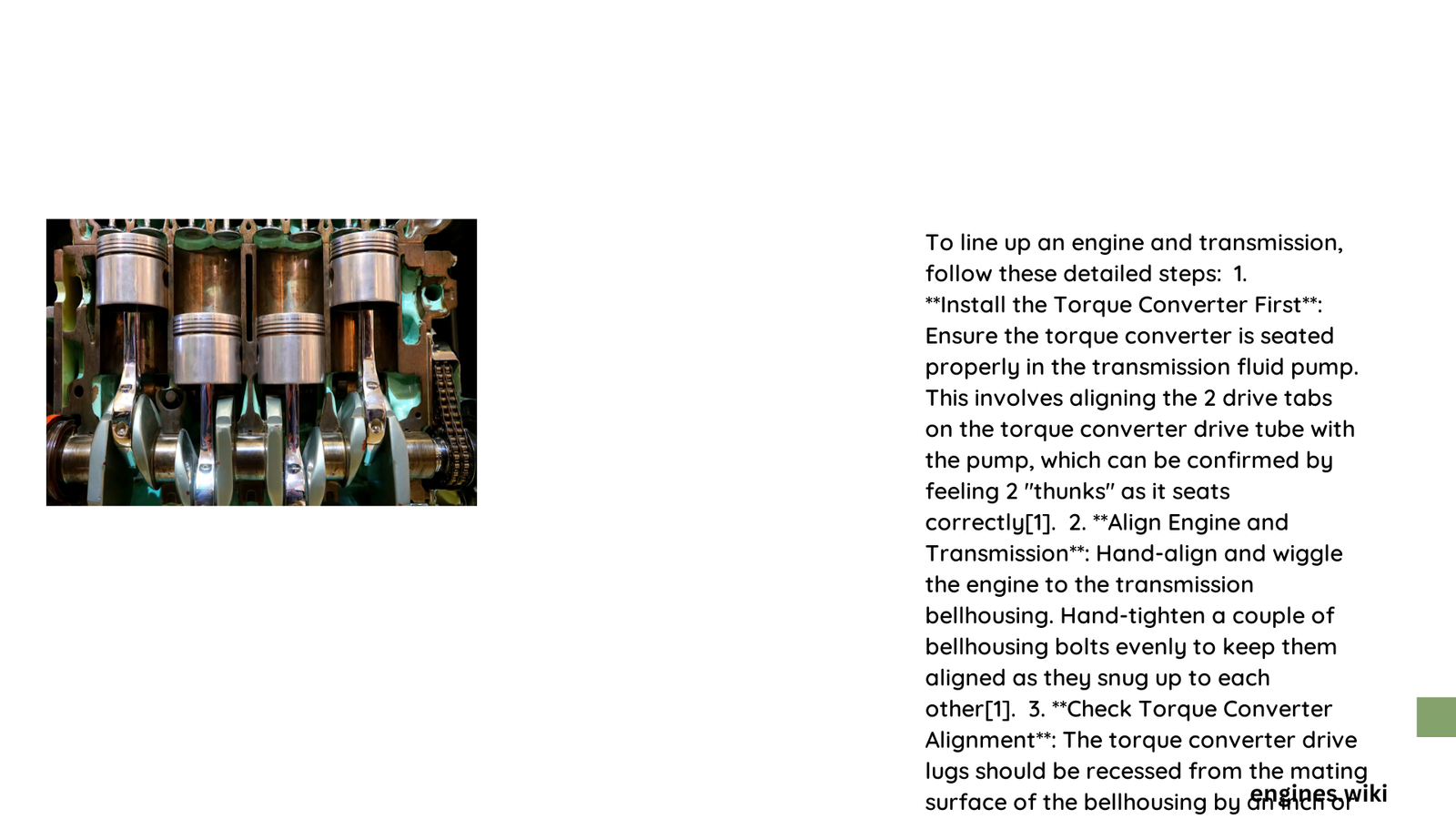Aligning an engine and transmission requires meticulous precision and specialized techniques. Professionals utilize advanced measurement tools, understand critical tolerances, and follow systematic approaches to ensure perfect shaft alignment, preventing premature wear, reducing mechanical stress, and optimizing overall powertrain performance. Successful alignment demands technical expertise, specialized instruments, and a comprehensive understanding of mechanical interactions.
What Are the Critical Preparation Steps for Engine and Transmission Alignment?
Preliminary Inspection Techniques
Before beginning alignment, mechanics must conduct thorough preliminary assessments:
- Visual Component Examination
- Check shaft surfaces for damage
- Inspect coupling faces for irregularities
-
Verify mounting surfaces are clean and undamaged
-
Measurement Prerequisites
- Use dial indicators for precise measurements
- Prepare feeler gauges
- Have laser alignment tools ready
- Ensure proper lighting and workspace conditions
How Do Professionals Measure Shaft Misalignment?
Precision Measurement Methods
| Measurement Technique | Acceptable Tolerance | Required Tools |
|---|---|---|
| Optical Alignment | 0.001″ per inch | Laser alignment system |
| Dial Indicator Method | Maximum 0.004″ total | Dial indicator, rotating mechanism |
| Feeler Gauge Technique | Minimal gap between surfaces | Feeler gauges, coupling faces |
What Are Common Alignment Challenges?
Technical Obstacles in Engine-Transmission Matching
Mechanics frequently encounter several critical challenges:
- Angular Misalignment
- Shafts positioned at unexpected angles
- Causes increased mechanical stress
-
Requires precise angular correction
-
Parallel Displacement
- Centerline variations between components
- Leads to uneven wear
- Demands careful repositioning
How Can Misalignment Be Systematically Corrected?
Step-by-Step Alignment Process
Correction Sequence:
– Remove unnecessary mounting bolts
– Slide shaft to create minimal separation
– Rotate shaft, checking for potential wobble
– Verify vertical and horizontal positioning
– Use feeler gauges to measure gap precision
– Apply minimal torque during initial fitting
– Incrementally adjust and recheck alignment
What Tools Ensure Accurate Alignment?
Essential Alignment Equipment
- Precision Instruments
- Laser alignment systems
- Digital dial indicators
- Feeler gauges
- Optical measurement tools
- Torque wrenches
What Maintenance Practices Prevent Misalignment?
Proactive Alignment Strategies
- Regular precision checks
- Documenting initial alignment measurements
- Monitoring component wear patterns
- Implementing scheduled realignment protocols
Technical Considerations and Tolerances
Alignment Tolerance Guidelines:
– Maximum misalignment: 0.001″ per inch of coupling diameter
– Overall maximum misalignment: 0.004″
– Initial bolt torque: Approximately 5 ft-lbs
Cost and Professional Considerations
Investment Requirements:
– Precision alignment tools: $500 – $5,000
– Professional alignment service: $200 – $1,000
– Potential damage from improper alignment: $1,000 – $10,000
Conclusion

Successful engine and transmission alignment demands technical expertise, precise measurement, and systematic approach. By understanding complex mechanical interactions and utilizing advanced tools, professionals can ensure optimal powertrain performance and longevity.
